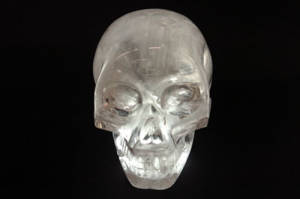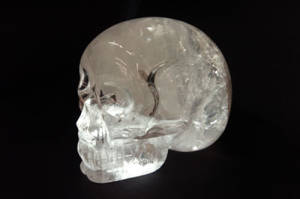It’s not a kingdom, but Carnegie has a crystal skull
Indiana Jones didn’t have to go to the ends of the earth to find a crystal skull. The Carnegie Museum of Natural History in Oakland has one.
On Saturday, coinciding with the release today of “Indiana Jones and the Kingdom of the Crystal Skull,” the museum will polish its 14-pound clear quartz skull and display it at the entrance to the Hillman Hall of Minerals and Gems.
The life-sized skull is carved from solid quartz and arrived at the museum in 2004, sent by Brazilian gemologist Armando Hilel.
“He wanted to give a gift to the museum because some friends of his did,” said Marc Wilson, head of the museum’s Section of Minerals. No information was sent with the skull and, aside from mailing Hilel a thank-you note, the Carnegie hasn’t tried to contact him.
Legend has it that ancient Mayans had 13 life-sized skulls carved from crystal that were lost to history. If found and brought together, the skulls would generate magnificent power.
The Carnegie’s skull isn’t thousands of years old. It probably doesn’t even date a decade. The British Museum in London and the Smithsonian in Washington have crystal skulls, neither of which is believed to be much more than 100 years old. The museums teamed up to examine their skulls and found markings on them consistent with modern tools not available to ancient Mayans.
“With the more famous ones, it is not clear whether they were meant to be fakes or not,” said Jeremy Sabloff, curator of Mesoamerican Archaeology at the University of Pennsylvania Museum of Archaeology and Anthropology in Philadelphia. “It was not until recently, maybe the last 30 years, that the legend was circulated, so they were probably made as objects.”
The Carnegie’s skull is valued at about $1,000, though Wilson said he wouldn’t be surprised if clever salesmen try to market similar skulls for double that amount. When “Jurassic Park” played a theaters, the asking price for pieces of amber encasing insects skyrocketed.
The Carnegie’s skull usually “sits in the safe and minds his own business,” Wilson said. “I’ve never even seen him change his expression.”
By Allison M. Heinrichs
TRIBUNE-REVIEW
Thursday, May 22, 2008


